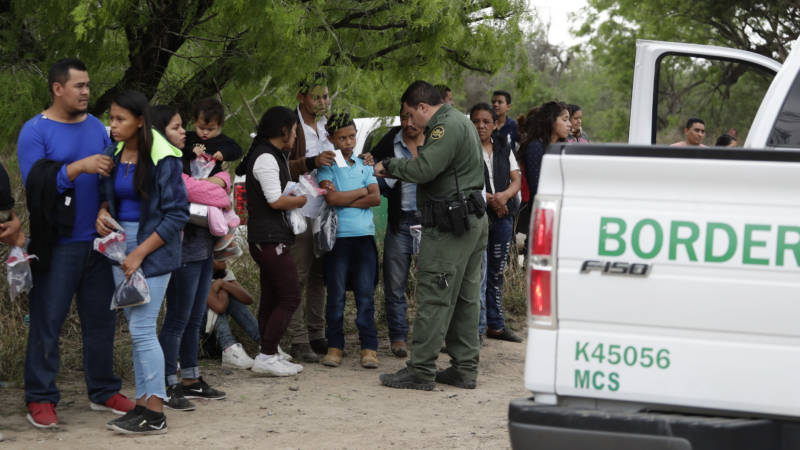Immigration authorities are expressing alarm about the growing number of migrants crossing the southern border.
Immigration System at 'Breaking Point,' Homeland Security Official Says

Federal agents apprehended more than 4,000 migrants crossing the border on each of two days this week — the highest daily total recorded in 15 years, a senior official with Customs and Border Protection said Wednesday.
"The breaking point has arrived," CBP Commissioner Kevin McAleenan said in El Paso, Texas.
"CBP is facing an unprecedented humanitarian and border security crisis all along our Southwest border — and nowhere has that crisis manifested more acutely than here in El Paso," McAleenan said.
As the weather warms up, immigration authorities warn that the flow of migrants crossing the border will continue to grow, possibly reaching as high as 150,000 per month. Federal agents are on pace to apprehend or encounter more than 100,000 migrants in March — the largest monthly total in more than a decade.
CBP will reluctantly begin releasing more migrant families with a notice to appear in immigration court, McAleenan said, instead of first handing them over to U.S. Immigration and Customs Enforcement for processing and detention.
CBP already had begun releasing some recently apprehended migrants to the streets of cities in the Rio Grande Valley. Senior border officials say they are prepared to extend that practice to other cities such as San Diego; Yuma, Arizona; and Del Rio and El Paso, Texas.
The majority of these migrants are families and children fleeing violence and poverty in Central America. McAleenan said they are straining the resources of border patrol facilities, which were designed primarily for single men and are far beyond their official capacity.
"We are doing everything we can to simply avoid a tragedy," McAleenan said. "But with these numbers, with the types of illnesses we're seeing at the border, I fear that it's just a matter of time."
CBP has stepped up medical care for migrants since two children died in custody in December. But McAleenan said efforts to provide that medical attention have diverted border patrol agents from their security duties.
"Our expanded medical checks and concerted efforts are saving lives," McAleenan said. "But they have a high cost to our enforcement mission."
In response, McAleenan said, CBP is redirecting 750 blue-uniformed agents who work at ports of entry to help the Border Patrol with the care and custody of migrants. McAleenan warned that could lead to longer wait times at ports of entry on the U.S.-Mexico border, but said "this is required to help us manage this operational crisis."
McAleenan spoke in El Paso, which has become the latest hot spot for migrant crossings in recent months.
"There's no questioning why this is happening," McAleenan said. "The increase in family units is a direct response to the vulnerabilities in our legal framework, where migrants and smugglers know that they will be released and allowed to stay in the U.S. indefinitely pending immigration proceedings that could be many years out."
But immigrant advocates dispute that. They note that migrants have a legal right to seek asylum once they're in the U.S.
Critics say the Trump administration has been too focused on deterring migrants from coming and has not allocated enough resources for humanitarian aid or adjudicating the migrants' asylum claims quickly.
"The Trump administration's response to the multidimensional refugee and migration challenge posed by deteriorating conditions in Central America is one-dimensional," said Frank Sharry, director of America's Voice. "No wonder their simplistic and futile strategy has failed so miserably."
There may be several reasons the number of migrants has grown in recent months — including the reach of social media, lower smuggling costs and unintended consequences of the Trump administration's crackdown on immigration.
John Burnett contributed to this report.
